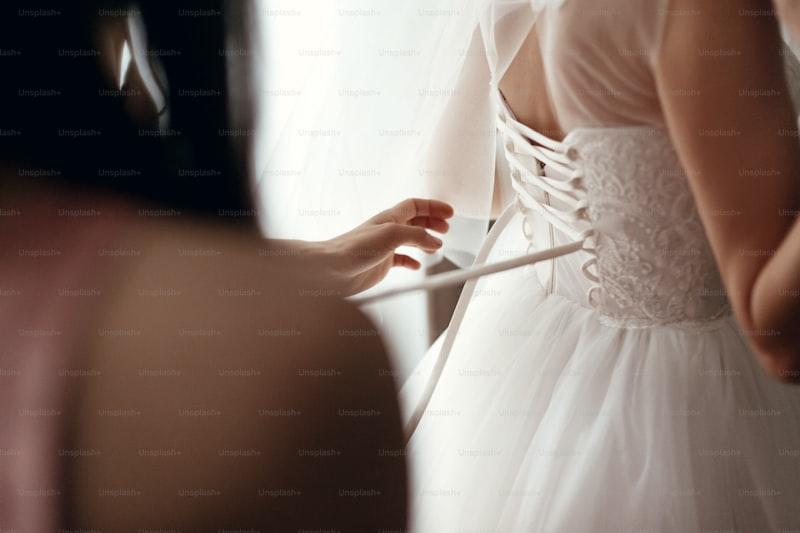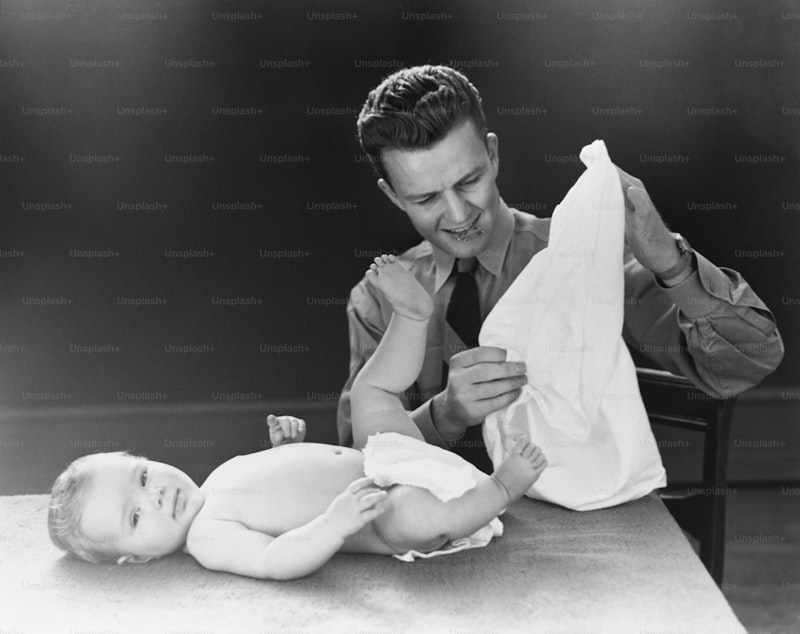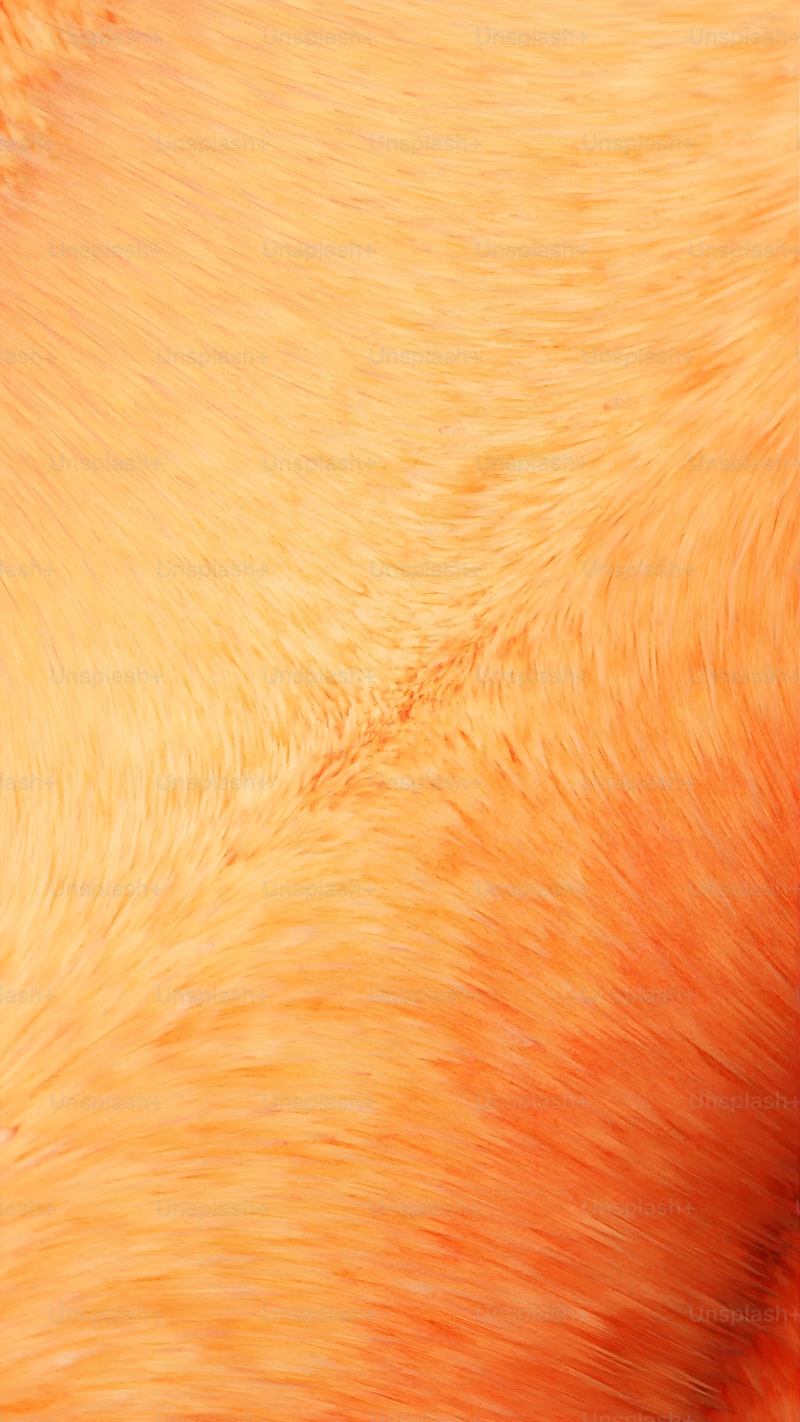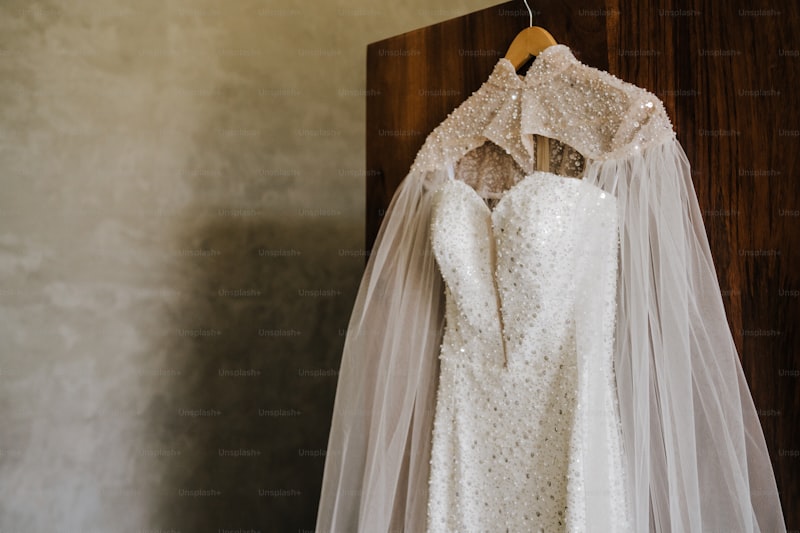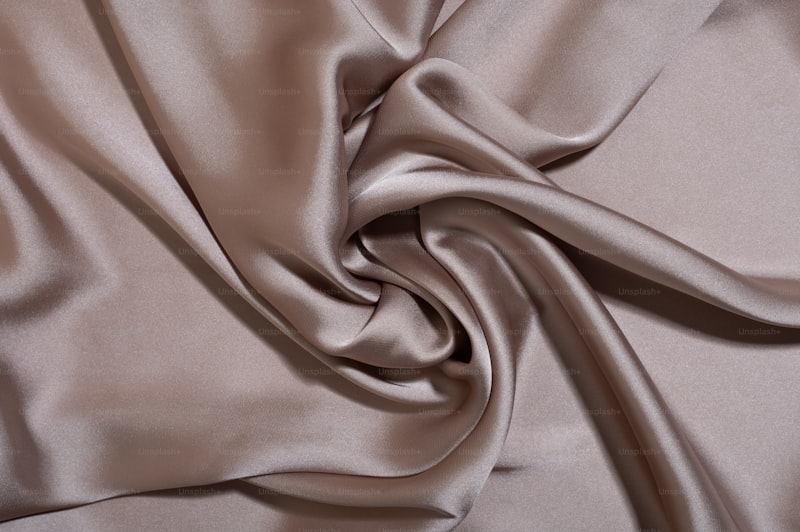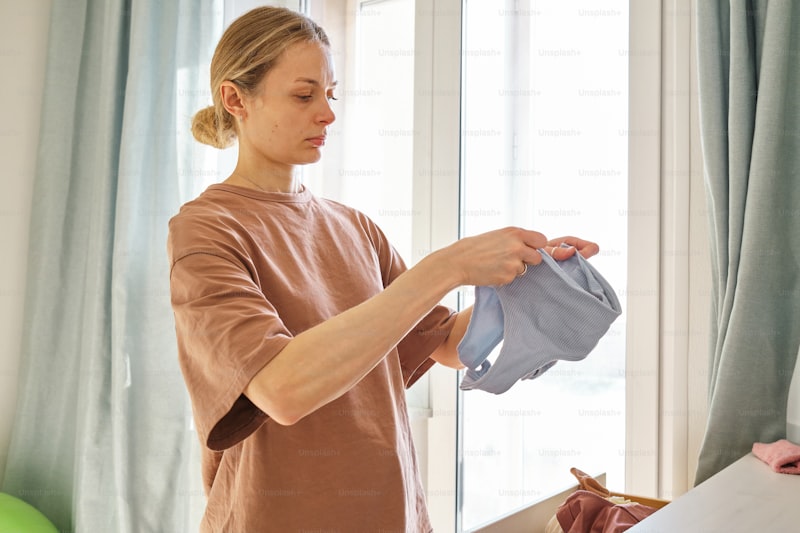Ultimate Guide: Recommendations for Wedding Dress Inspection
Introduction to Wedding Dress InspectionChoosing the perfect wedding dress is one of the most significant decisions a bride will make in her wedding planning journey. However, ensuring that your dream gown is in impeccable condition before your big day is equally crucial. This article will provide you with essential recommendations for wedding dress inspection, helping you avoid potential mishaps and ensuring that you feel your absolute best on your special day.Why is Wedding Dress Inspection Important?Wedding dresses can be intricate and delicate. An inspection can help identify issues that may need to be addressed, such as: Damage: Look for any tears, stains, or loose beads. Fit: Confirm that the dress fits properly and is comfortable for wearing. Hygiene: Ensuring the gown is clean and free from any odors.Key Recommendations for Inspecting Your Wedding DressBelow are detailed recommendations to follow when inspecting your wedding dress:1. Check for DamageBegin your inspection by examining the entire dress for any visible damage. Look for: Tears or rips in the fabric Loose threads or seams Missing beads or embellishments Discoloration or stainsIf you find any issues, it's essential to have them repaired by a professional seamstress before the wedding.2. Verify the FitThe fit of your wedding dress is crucial for your comfort and overall appearance. Recommendations for checking the fit include: Wear the proper undergarments: Consider the style of your dress and wear s...
Ultimate Guide to Protective Garments for Transporting Dresses
When it comes to transporting dresses, especially those of high value or sentimental significance, ensuring their protection is paramount. This is where protective garments for transporting dresses come into play. In this article, we will explore the importance of these protective garments, the various types available, and how to choose the right one to suit your needs.Understanding Protective Garments Protective garments for transporting dresses are specially designed covers that shield your garments from dirt, dust, moisture, and physical damage. Whether you are a bridal shop owner, a fashion designer, or simply someone wanting to protect valuable dresses during travel, the right protective garment can help maintain the integrity of your clothing. Let's delve deeper into the different options available.Types of Protective Garments There are several types of protective garments for transporting dresses, each catering to specific needs: Type Description Garment Bags These are often made of thick plastic or fabric and come with zippers. They are perfect for transporting dresses to and from venues. Bridal Bags Designed specifically for wedding dresses, these bags offer extra cushioning and support to prevent creasing. Wrinkle-Resistant Covers These covers are treated to resist wrinkling and are best for delicate fabrics. Travel-Safe Containers Hard-shell containers that provide maximum protection against impact and environmental factors. Why...
Preventing Yellowing in White Fabrics: Effective Tips and Solutions
Understanding the Causes of Yellowing in White FabricsWhite fabrics are often the go-to choice for many, whether it’s for clothing, bed linens, or upholstery. However, over time, these bright and pristine materials can develop unsightly yellow stains. This phenomenon can occur due to a variety of reasons, ranging from improper washing techniques to environmental factors. In this article, we will explore the most common causes of yellowing in white fabrics and provide effective tips for prevention.The Causes of YellowingYellowing can happen to white fabrics for several reasons. Here are the key factors at play:CauseDescriptionBody Oils and SweatNatural body oils and sweat can build up on fabrics, leading to discoloration over time.Improper WashingUsing the wrong detergent or washing technique can cause white fabrics to yellow.Exposure to SunlightProlonged exposure to UV rays can degrade fabric fibers and lead to yellowing.Fabric CompositionCertain materials, particularly synthetic ones, tend to yellow more quickly than natural fibers.OxidationOver time, chemicals and environmental factors can cause fabrics to oxidize, leading to yellowing.How to Prevent Yellowing in White FabricsPreventing yellowing in white fabrics is crucial to maintaining their brightness and quality. Here are some effective strategies:1. Choose the Right DetergentNot all detergents are created equal. When washing white fabrics, opt for a high-quality detergent that is specially formulated to brighten white...
Educating Yourself About Dress Care Myths: Debunking Common Misconceptions
Understanding Dress Care MythsWhen it comes to maintaining the beauty and longevity of your dresses, several myths have surfaced over the years that can lead to damaging decisions. Educating yourself about dress care myths is essential for safeguarding your wardrobe investments. In this article, we'll explore common misconceptions, provide evidence-based practices, and offer practical tips that will help you take better care of your clothing collection. Our aim is to empower you with knowledge to ensure your dresses look their best for years to come.Common Dress Care MythsBefore we dive into best practices for dress care, let’s address some widely held myths that may have influenced how you care for your garments.MythFactWashing your dress less frequently prevents wear.Fabrics can accumulate dirt and oils. Regular cleaning helps maintain the fabric’s integrity.All dresses can be machine washed.Some fabrics, like silk and lace, may shrink or get damaged in the wash—always check the care label.Dry cleaning is the only way to clean delicate fabrics.While dry cleaning is suitable for many garments, some can be hand-washed or spot-cleaned effectively.You can fix pilling with a lint roller.A lint roller can help, but using a fabric shaver is more effective for removing pilling.Debunking the MythsTo truly understand these myths, let’s delve deeper into why they exist and how they can lead to poor dress care:1. Washing FrequencyThe belief that less frequent washing extends the life o...
The Role of Humidity in Dress Preservation: A Comprehensive Guide
Understanding the Importance of Humidity in Dress PreservationWhen it comes to preserving clothing, especially vintage or delicate dresses, humidity plays a crucial role. In this guide, we will explore how humidity affects dress preservation, the ideal humidity levels for maintaining clothing, and practical tips for managing humidity in your storage space. We will also answer some common questions regarding dress care and preservation to provide you with a comprehensive understanding of this essential topic.The Science Behind HumidityHumidity refers to the amount of water vapor present in the air. It is measured as a percentage, where higher percentages indicate more moisture. For clothing preservation, understanding the relationship between humidity and fabric is key to avoiding damage. Fabrics can absorb moisture from the air, leading to issues such as mold, mildew, and fabric degradation. Conversely, low humidity levels can cause fabrics to dry out and become brittle.Ideal Humidity Levels for Dress PreservationThe ideal humidity levels for preserving clothing typically range from 45% to 55%. This range helps maintain the integrity of fabrics, prevents mold and mildew growth, and ensures that garments do not become too dry. Notably, different fabrics may have varying humidity requirements. For example, silk and wool are sensitive to changes in humidity and may require more attention compared to cotton or polyester.Fabric TypeIdeal Humidity LevelPreservation TipsSilk45% - 55...
Understanding the Impact of Sunlight on Fabrics: A Comprehensive Guide
When it comes to maintaining the longevity and appearance of fabrics, understanding the impact of sunlight is crucial. Sunlight, while a vital source of energy and warmth, can significantly affect various types of fabrics used in our daily lives. In this article, we will explore how sunlight interacts with different materials, the effects it has on their structure and color, and strategies for protecting fabrics from excessive sunlight exposure.The Science Behind Sunlight and FabricsSunlight consists of various wavelengths, including ultraviolet (UV) rays, visible light, and infrared radiation. These components can initiate photochemical reactions in fabrics, leading to fading, weakening, and degradation. Let’s break down the different ways sunlight can affect fabrics:The Effects of Sunlight on Different Types of FabricsFabric TypeEffects of SunlightCottonCan fade and weaken over time, especially with prolonged exposure.PolyesterMore resistant to fading, but still susceptible to UV damage and heat.SilkHighly sensitive to sunlight; can lose luster and color rapidly.LinenFades more slowly than cotton but can still degrade over time.WoolGenerally resistant but can become brittle if exposed to excessive sun.Ultraviolet RaysUltraviolet rays are a significant concern when it comes to the impact of sunlight on fabrics. These rays can break down the molecular structure of fibers, leading to loss of strength and integrity. For instance, cotton, a commonly used fabric, is particularly ...
Essential Guidelines for Wrapping and Storing Wedding Dresses: Preserve Your Precious Memories
Introduction to Wedding Dress PreservationYour wedding dress is not just a piece of clothing; it’s a symbol of love, commitment, and beautiful memories. Properly wrapping and storing your wedding dress is crucial to preserving its beauty and integrity for years to come. In this article, we will provide essential guidelines for wrapping and storing wedding dresses, ensuring that your gown remains in excellent condition for future generations. Additionally, we will address common questions concerning this process and provide tips on how to keep your wedding dress looking its best.Why Proper Storage is ImportantWedding dresses are often made of delicate fabrics such as silk, satin, or lace, which can be easily damaged if not stored properly. Factors like light, humidity, and temperature can affect the fabric and color of your dress over time. By understanding the significance of proper storage, you can avoid common pitfalls associated with wedding dress preservation.Step-by-Step Guidelines for Wrapping Your Wedding DressHere are the essential steps for wrapping your wedding dress effectively:1. Gather Your MaterialsBefore you begin, gather all the necessary supplies to ensure a smooth process: Acid-free tissue paper A sturdy, acid-free garment bag Flat, clean surface for wrapping Gentle stain remover (if necessary) Spray bottle with distilled water2. Clean Your DressCleaning your wedding dress is essential before storing it. Even if it appears clean, residual oils or stains...
How to Preserve Wedding Attire: A Comprehensive Guide
Your wedding attire is more than just an outfit; it's a symbol of one of the most significant days of your life. As such, learning how to preserve wedding attire is essential for maintaining its beauty and significance for years to come. In this detailed guide, we will outline the steps to effectively preserve your wedding attire, offer practical tips, and discuss related questions such as cleaning, storage, and restoration.Why Preserve Your Wedding Attire?Wedding dresses and suits hold not only sentimental value but can also be a significant financial investment. Here are some reasons to consider when you think about preserving your wedding attire: Sentimental Value: Your wedding attire holds memories of the day you said "I do," and it can be a lovely piece to pass down to future generations. Investment Protection: Many couples spend thousands of dollars on wedding attire; preserving it can help protect this financial investment. Future Wear or Rental: Your wedding attire might inspire future generations to use it for their special day, or you might consider offering it for rent.Steps to Preserve Wedding AttireNow that we understand why preservation is significant, let's delve into the steps to preserve your wedding attire properly.1. Post-Ceremony CareImmediately following the ceremony, it's essential to take steps to minimize damage to your wedding attire. Here are some quick post-ceremony tips: Avoid Stains: Be cautious about food and drink while celebrating. If any s...
Essential Tips for Dress Maintenance: Keep Your Wardrobe in Pristine Condition
Maintaining your dresses is crucial not only for longevity but also to ensure they remain in excellent condition for every occasion. Whether you are a fashion enthusiast or simply someone who wants their clothing to last longer, understanding the fundamentals of dress maintenance can save you time and money in the long run. In this article, we will delve into essential tips for dress maintenance that will keep your wardrobe looking stunning.Understanding Different Dress FabricsBefore diving into maintenance tips, it is essential to understand that different fabrics require varied care methods. Here’s a quick overview:Fabric TypeCare InstructionCottonMachine washable in cold water, tumble dry on low.SilkHand wash or dry clean to avoid damage.WoolDry clean recommended; avoid excessive washing.PolyesterMachine washable, durable but may wrinkle.LaceHand wash in cold water; avoid wringing.1. Washing and Cleaning Your DressesIt might seem simple, but how you wash your dresses can make a significant difference. Always read the care label before washing. Here are some essential tips:Separate Colors: Always wash dark and light colors separately to prevent color bleeding.Cold Water is Key: Washing in cold water helps to preserve the fabric’s integrity.Gentle Cycle: Use the gentle cycle for machine washing delicate fabrics.Hand Washing: For luxury fabrics like silk and lace, hand washing is preferred.Avoid Overloading: Never overload the washing machine; this can cause friction and dama...
Ultimate Guide to Silk and Satin Fabric Care: Preserve Your Luxurious Textiles
Understanding Silk and Satin FabricsSilk and satin are two of the most luxurious fabrics available, known for their elegance, softness, and beautiful drape. However, they require special care to maintain their quality and longevity. Whether you own silk blouses, elegant satin evening gowns, or delicate silk scarves, understanding how to properly care for these fabrics is essential to keep them looking their best. In this comprehensive guide, we will explore the best practices for silk and satin fabric care, common misconceptions, and tips to address frequent maintenance issues.What are Silk and Satin Fabrics?Before diving into the specifics of care, it's crucial to understand the differences between silk and satin:FabricDefinitionCare CharacteristicsSilkA natural protein fiber produced by silkworms, valued for its smooth texture and natural sheen.Often requires dry cleaning; wash with cold water if necessary; avoid direct sunlight.SatinA weave type that can be made from various fibers (including silk, polyester, and nylon), characterized by a glossy surface.Machine washable if synthetic; hand wash or dry clean if pure silk; iron at low heat.Why is Proper Care Important?Due to their delicate nature, silk and satin fabrics can easily be damaged if not cared for properly. Improper handling can lead to discoloration, fabric degradation, or loss of texture. Here are some reasons why proper care is crucial:Preservation of Color: Silk and satin can fade over time, especially when ex...
Essential Guide to Cleaning and Storing Your Bridal Gown: Tips for a Timeless Keepsake
IntroductionYour bridal gown is not just a dress; it’s a cherished memory of one of the most significant days of your life. Cleaning and storing your bridal gown properly ensures that it remains in pristine condition for years to come. In this article, we will cover everything you need to know about cleaning and storing your bridal gown, including tips, tricks, and common questions related to bridal gown preservation.Why Is Proper Care Important?Bridal gowns often carry sentimental value, and preserving them properly can allow you to pass them down or even wear them again. Improper handling, cleaning, or storing can lead to irreversible damage. Here are several reasons why you should focus on effective cleaning and storing: Preservation of Fabric: Fabrics like silk, satin, and lace are delicate and require special attention. Stain Prevention: Body oils, makeup, and food can leave lasting stains if not treated promptly. Future Use: Whether you want to wear your gown again or save it for future generations, proper care is essential.Step-by-Step Guide to Cleaning Your Bridal GownCleaning your bridal gown involves several steps to ensure it remains in excellent condition. Here’s a detailed guide:1. Assess the Condition of the GownBefore cleaning, inspect your gown thoroughly. Look for stains, tears, or any other damage that may need special attention.2. Choose the Right CleanerNot all cleaners are suitable for wedding gowns. It’s essential to select a dry cleaner who spe...
Ultimate Guide to Preventing Stains on Formal Wear: Tips and Tricks
IntroductionNothing says elegance quite like a well-fitted suit or a beautiful formal dress. However, for anyone who has attended a formal event, the fear of spilling a drink or dropping food on this attire is a common concern. In this article, we will delve into the best practices for preventing stains on formal wear, ensuring that your outfits remain pristine regardless of the occasion.Why Stains HappenBefore we explore preventive measures, it’s essential to understand why stains occur. Formal wear is typically made from fabrics that are more prone to staining or discoloration, such as silk, satin, and wool. Here are some common reasons why stains happen:Food and Drink Spills: A small slip while having hors d'oeuvres can ruin an otherwise splendid outfit.Sweat and Body Oils: High-pressure events can lead to sweat, which can cause yellow stains on white garments.Makeup Smudges: Getting makeup on the collar or sleeves can be an unwelcome surprise.Prevention TechniquesNow that we know what causes stains, let’s look at the preventing stains on formal wear techniques you can implement.1. Choose the Right FabricSelecting the right fabric is vital for formal wear. Some materials are inherently resistant to stains. For instance:FabricStain ResistancePolyesterGoodSilkPoorBlend FabricsModerateBy opting for polyester blends or other synthetic fibers, you may reduce the likelihood of stains appearing.2. Use Protective ProductsBefore wearing your formal attire, consider applying a fabri...
